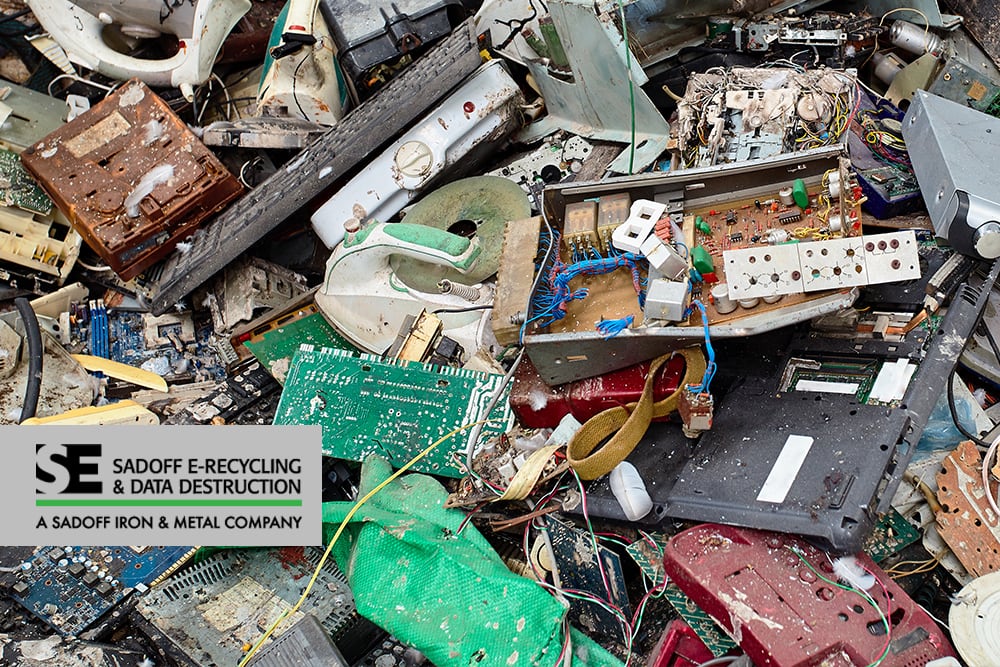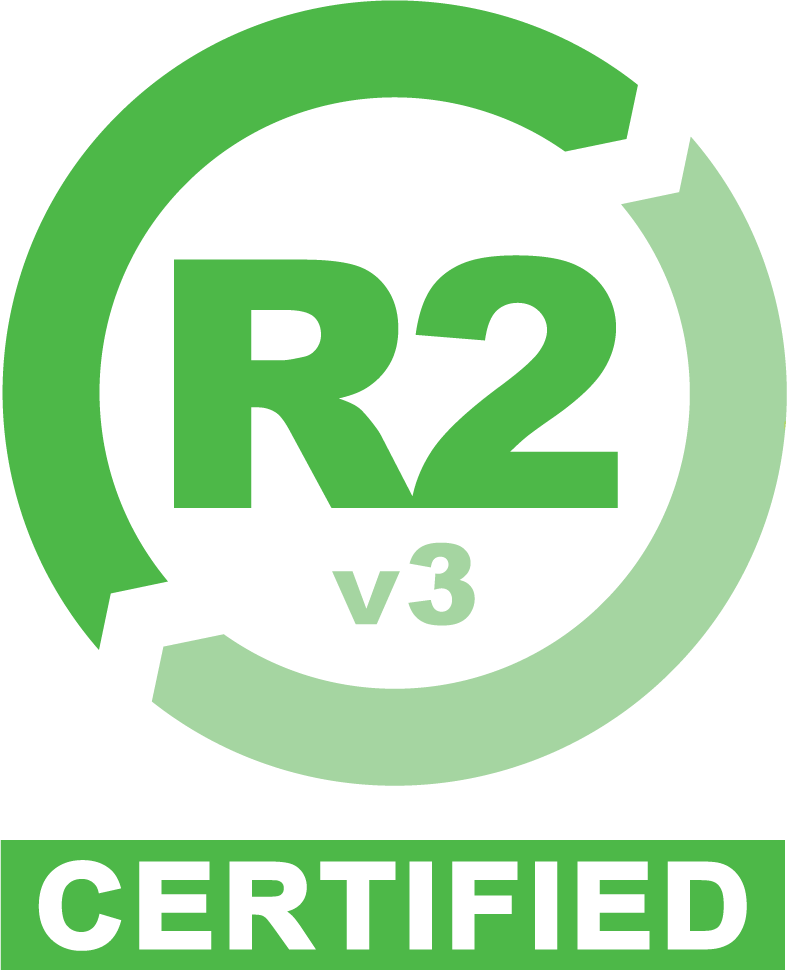Report: Annual E-Waste Outweighs the Great Wall of China
 26
26 May
We founded Sadoff E-Recycling & Data Destruction in 2017 to help address the growing need for proper electronic waste disposal. In the years since we began our operations, the amount of electronic equipment produced annually has only accelerated. The accompanying production of e-waste facing our planet has put us in a desperate situation; one might even say we have our backs to the wall.
Measuring 13,171 miles, the Great Wall of China is estimated to be the heaviest artificial object on Earth. Yet even the weight of this enormous structure has now been surpassed by the amount of global e-waste produced annually. Per a staggering report from the Waste Electronics and Electrical Equipment (WEEE) Forum, over 57.4 million metric tons of e-waste was produced in 2021.
The WEEE Forum report predicts e-waste production totaling 74 million metric tons by 2030, with a trend of 3 to 4% growth annually. The report—released in concordance with International E-Waste Day—cited a 3% annual, global increase in electronics consumption as an explanation for this trend. Further, the WEEE Forum’s study of European electronics consumption habits revealed, “11 of 72 electronic items in an average household are no longer in use or are broken.”
The Impact of E-Waste
What’s so bad about this increasing amount of e-waste? In short, improper disposal. A mere 17.4% of global e-waste was properly treated and recycled in 2019, per the WEEE Forum’s most recent statistics. That leaves the vast majority to be either thrown in landfills or (illegally) exported to countries with more lenient, or even nonexistent laws regarding e-waste.
This range of problems results from improper disposal, foremost being environmental damage. Inadequate e-waste disposal initiates a series of setbacks to the planet, which ultimately affect people.
- Extraction of rare materials—Not only does electronics manufacturing threaten to strip land of finite resources such as minerals and precious metals, but the mining process itself is a pollutant. Per Mongabay, “Mineral extraction consumes gigantic quantities of fresh water and can pollute soil, water and air, while vast open-pit mines drive large-scale land-use change, cause deforestation and threaten biodiversity. Mining, processing, and transporting minerals also uses enormous amounts of energy, generating greenhouse gas emissions.”
- Decomposition of electronics—Electronic equipment that reached end-of-life is often carelessly thrown away, destined for a landfill. There, the decomposition of e-waste leads to toxic chemicals seeping into the soil and water supply.
- Do-it-yourself component retrieval—When makeshift operations in developing countries attempt to extract valuable components from e-waste, the results can be dreadful for the environment and for the people who perform the task. The Geneva Environment Network cites open-air burning and acid baths among the crude component recovery tactics, practices which can “expose workers to high levels of contaminants such as lead, mercury, beryllium, thallium, cadmium and arsenic, and also brominated flame retardants (BFRs) and polychlorinated biphenyls, which can lead to irreversible health effects, including cancers, miscarriages, neurological damage and diminished IQs.”
(View our E-Recycling by the Numbers infographic for eye-opening statistics on the impact of e-waste.)
Avoid Data Insecurity
As if putting Earth’s ecosystem at risk weren’t enough, companies who improperly dispose their e-waste are also putting their security at risk. Bank account information, sensitive client information, and trade secrets are among the data that can be mined from discarded electronics—even when companies think they’ve managed to wipe all remnants from their past equipment. Secure data destruction is typically a much more involved process than companies comprehend, particularly as dedicated data thieves grow exceedingly capable of extracting valuable information from e-waste.
Proper E-Waste Disposal—With Secure Data Destruction
While the Great Wall of China was built as a solution to keep enemies at bay, there is no separating ourselves from the colossal impact of e-waste.
Fortunately, the problems presented by e-waste are not insurmountable. E-recycling is our greatest method of combatting the potential destruction brought by increasing global electronics production. Not only does e-recycling ensure all toxic materials avoid our ecosystems, but proper recovery of electronics components means resources can be reused in new production, lessening the extraction of new materials.
When possible, whole components (such as circuit boards) are completely cleared of past data, refurbished, and resold to be reused. In other cases, the valuable materials from e-waste are safely, carefully, and professionally extracted. And when we say valuable, we mean it: $55 billion worth of precious metals is thrown away with U.S.-produced e-waste each year!
Meanwhile, the cost of the average data breach has climbed to $4.24 million. Clearly there is a tremendous amount of loss that can be prevented across the board with proper e-recycling.
Making E-Recycling Easier
Though legislation is beginning to catch up with the current e-waste crisis, it’s still woefully inadequate regarding a problem of this magnitude. For example, there is no legislation regarding planned obsolescence—the practice of companies manufacturing products to intentionally either fail or need replacement.
Spreading awareness of the e-waste crisis is perhaps the most important step to solving it. Comparing the mass of e-waste to one of the Seven Wonders of the World will hopefully gain necessary attention. And for those ready to attack this problem head on, contact us to learn how we can better manage your electronic asset disposal and data destruction.
Tags: cyber security, data destruction, data security, e-recycling, proper disposal of computer monitor, refurbished electronicsCategorized in: Data Security, Electronics Recycling, Sustainability




 Google map directions
Google map directions
 Google map directions
Google map directions
 Google map directions
Google map directions
 Google map directions
Google map directions
 Google map directions
Google map directions
 Google map directions
Google map directions
 Google map directions
Google map directions